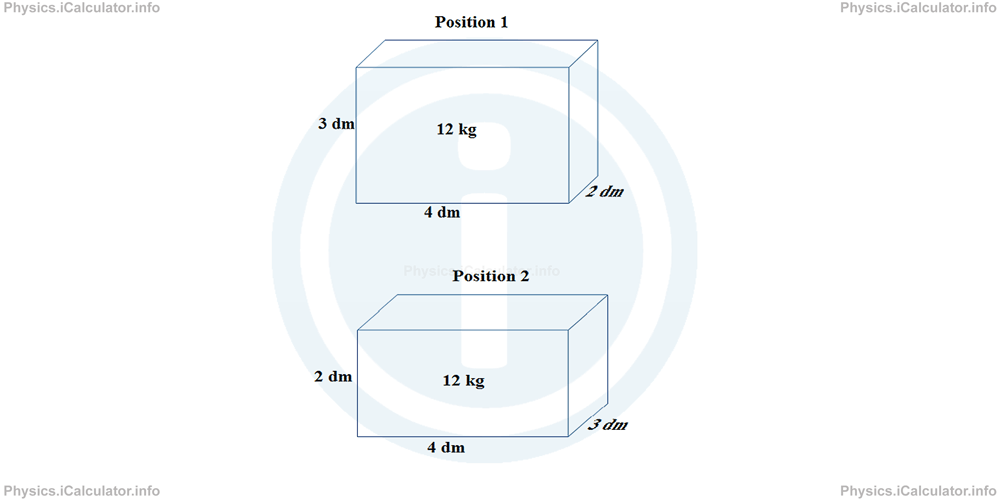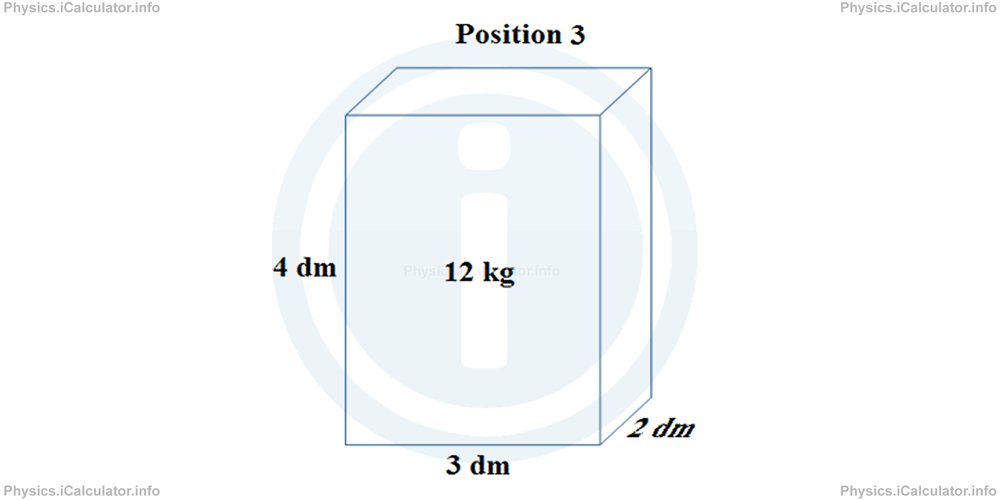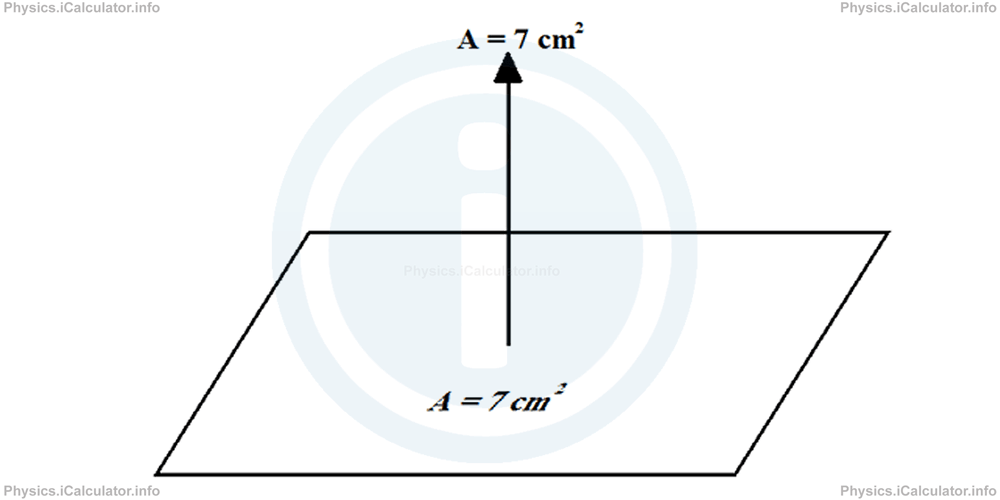Menu
Physics Lesson 9.2.3 - Example - Pressure Comparison
Please provide a rating, it takes seconds and helps us to keep this resource free for all to use
Welcome to our Physics lesson on Example - Pressure Comparison, this is the third lesson of our suite of physics lessons covering the topic of Pressure. Solid Pressure, you can find links to the other lessons within this tutorial and access additional physics learning resources below this lesson.
Solid Pressure Example - Minimum Force
In the first example of solid pressure calculations in this lesson we looked at minimum force, we will now look at another example, this time examining how the surface of contact affects the value of solid pressure.
Example 2
Compare the pressures exerted by the same object (a 12 kg cuboid of dimensions 4 dm × 3 dm × 2 dm). For convenience, take g = 10 m/s2.
Solution 2
Since the opposite faces of a cuboid are identical, there are three possible positions it can be placed on the ground. They are:


For the area A, in all three cases we must consider only the lower base, as only it relies on the ground. Thus, In the first position, we have
= 8 dm2
= 0.08 m2
In the second position, we have
= 12 dm2
= 0.12 m2
and in the third position, we have
= 6 dm2
= 0.06 m2
Force is the same in all cases; it is equal to the object's weight. Therefore, we have
= F
= W
= m × g
= 12 kg × 10 m/s2
= 120 N
Hence, we obtain for the pressure in all three positions:
= 120 N/0.08 m2
= 1500 Pa
P2 = F2/A2
= 120 N/0.12 m2
= 1000 Pa
P3 = F3/A3
= 120 N/0.06 m2
= 2000 Pa
Thus, again it is confirmed the fact that the smallest contact area produces the greatest pressure for the same force and vive-versa, i.e. force and area are inversely proportional to each other.
Remarks!
1 There is a confusion derived from the fact that despite force is a vector, pressure is a scalar quantity. There are two explanations for this issue: a mathematical and a physical explanation. Let's discuss both of them.
1 a - In vector theory, area is represented by a vector that is normal to it, and this vector has a magnitude equal to the numerical value of the given area. Thus, if the area in the figure below is 7 cm2, it is represented by a vector which is 7 units long and lies normal to the surface as shown in the figure below.

As a result, we have to divide two vector quantities when calculating pressure. It is known from section 2 that vectors can divide only in scalar mode. Therefore, when dividing two vectors such as force and area, we obtain a scalar, i.e. pressure
.1 b - We will explain in the next tutorials that - except for solids - pressure is a quantity, which acts in all directions. Thus, when we immerse in water, it exerts pressure in all directions on our body. This is also true for the gas pressure as well. For example, atmosphere - which is a mixture of gases - exerts the same pressure on our body in all directions. Therefore, it is not fair to consider pressure as a vector only because of solid pressure. Hence, definitively pressure is a scalar.
2 - It is still unclear for most people whether pressure should be written in uppercase "P" or lowercase "p" in the formulae. There is a widely accepted opinion that one can use both versions depending on the topic that is being discussed. Thus, pressure in thermodynamics can be written in either capital 'P' or lowercase 'p' depending on how it's used in different engineering problems. However, we can also express pressure in capital 'P' when dealing with Enthalpy or Entropy.
You have reached the end of Physics lesson 9.2.3 Example - Pressure Comparison. There are 3 lessons in this physics tutorial covering Pressure. Solid Pressure, you can access all the lessons from this tutorial below.
More Pressure. Solid Pressure Lessons and Learning Resources
Whats next?
Enjoy the "Example - Pressure Comparison" physics lesson? People who liked the "Pressure. Solid Pressure lesson found the following resources useful:
- Compare Feedback. Helps other - Leave a rating for this compare (see below)
- Density and Pressure Physics tutorial: Pressure. Solid Pressure. Read the Pressure. Solid Pressure physics tutorial and build your physics knowledge of Density and Pressure
- Density and Pressure Revision Notes: Pressure. Solid Pressure. Print the notes so you can revise the key points covered in the physics tutorial for Pressure. Solid Pressure
- Density and Pressure Practice Questions: Pressure. Solid Pressure. Test and improve your knowledge of Pressure. Solid Pressure with example questins and answers
- Check your calculations for Density and Pressure questions with our excellent Density and Pressure calculators which contain full equations and calculations clearly displayed line by line. See the Density and Pressure Calculators by iCalculator™ below.
- Continuing learning density and pressure - read our next physics tutorial: Liquid Pressure. Pascal's Principle
Help others Learning Physics just like you
Please provide a rating, it takes seconds and helps us to keep this resource free for all to use
We hope you found this Physics lesson "Pressure. Solid Pressure" useful. If you did it would be great if you could spare the time to rate this physics lesson (simply click on the number of stars that match your assessment of this physics learning aide) and/or share on social media, this helps us identify popular tutorials and calculators and expand our free learning resources to support our users around the world have free access to expand their knowledge of physics and other disciplines.